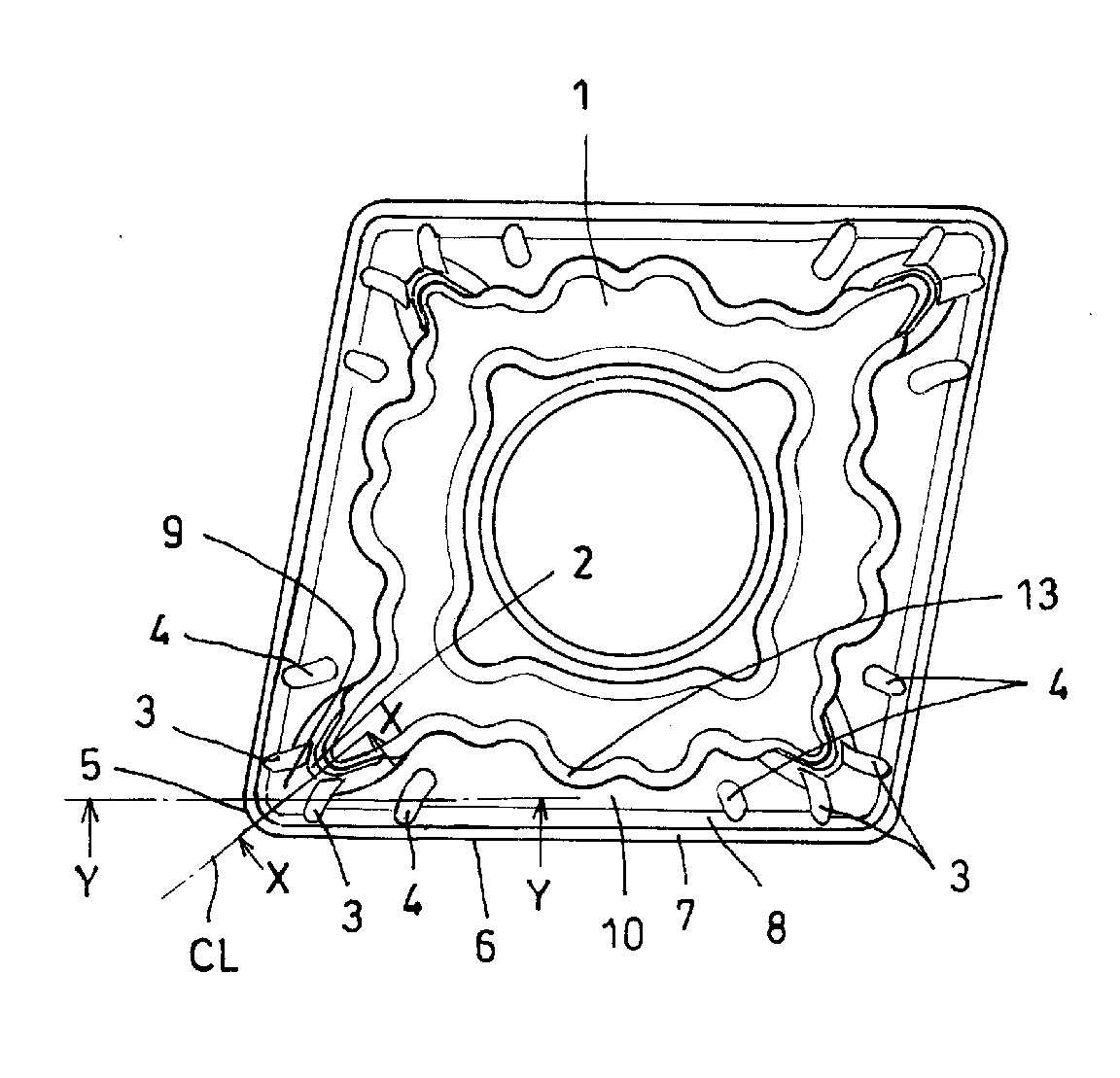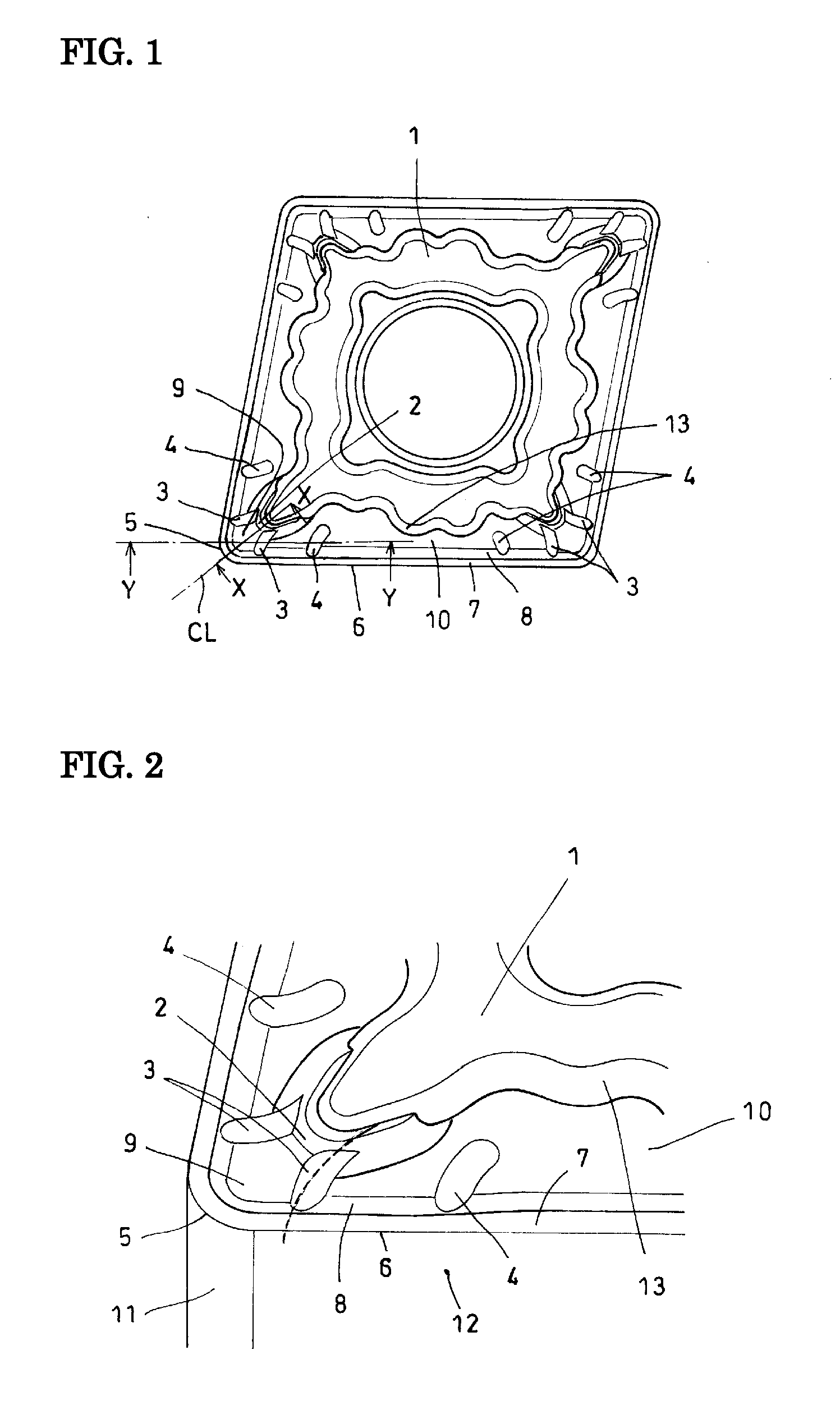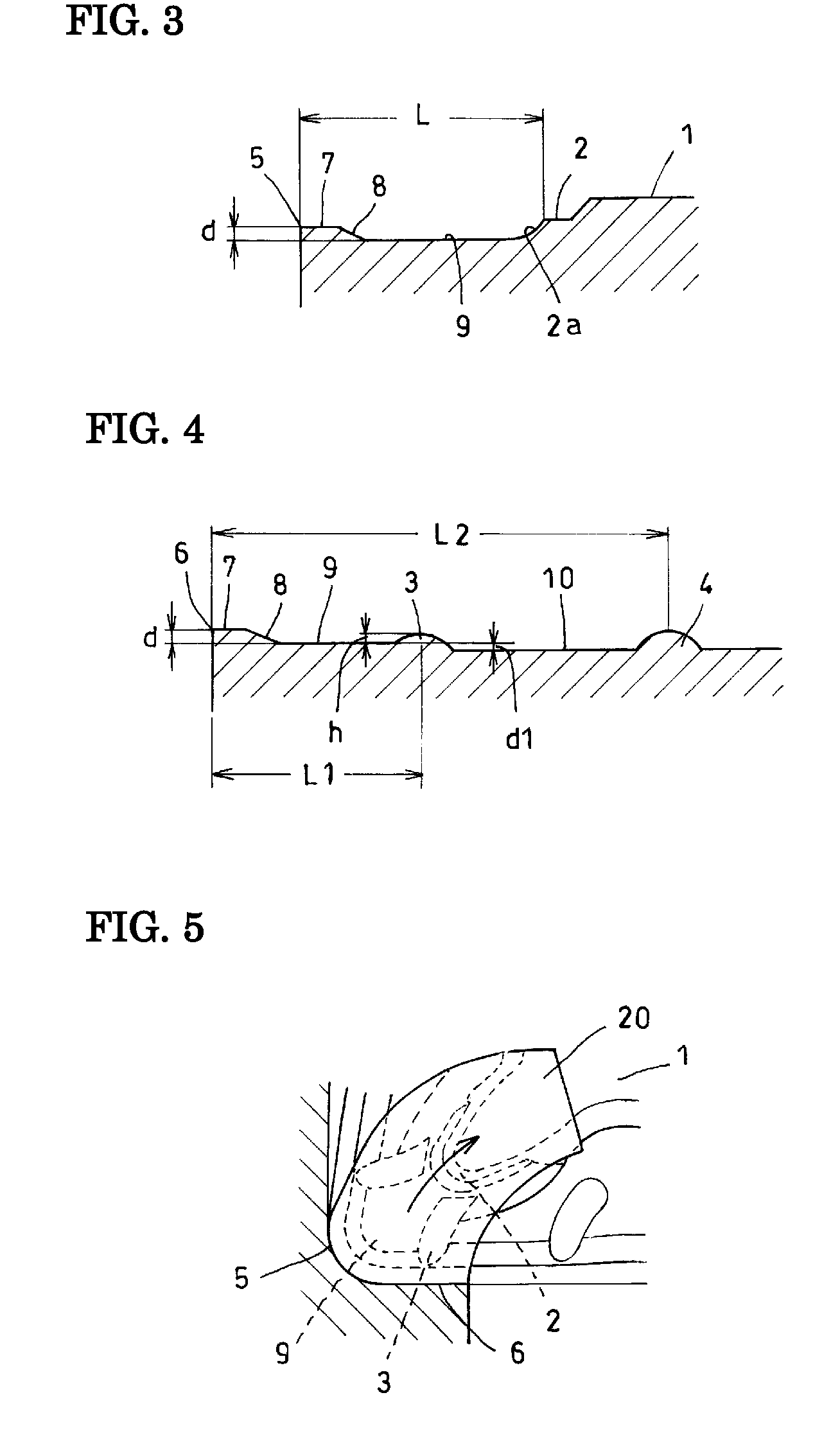Indexable insert
a technology of indexable inserts and inserts, which is applied in the direction of cutting inserts, manufacturing tools, shaping cutters, etc., can solve the problems of deteriorating the processing ability of chips, crater abrasion in contact regions, and serious damage, so as to enhance the protection effect of the first ridge is enhanced, and the resistive state is low
- Summary
- Abstract
- Description
- Claims
- Application Information
AI Technical Summary
Benefits of technology
Problems solved by technology
Method used
Image
Examples
Embodiment Construction
[0034]An indexable insert according to an embodiment the present invention will be described below with reference to FIGS. 1 to 10B. FIG. 1 is a plan view of a rake face of a diamond-shaped insert according to this invention, as viewed from above. FIG. 2 is a perspective view of one of acute corners of the insert shown in FIG. 1. This insert has a flat boss surface 1 at a central section on the top face thereof, two acute corners, and two obtuse corners. At each acute corner, the rake face has thereon a single first ridge 2 and a plurality of second ridges 3, and likewise, at each obtuse corner, the rake face has thereon a single first ridge 2 and a plurality of second ridges 3. These first ridges 2 and the second ridges 3 are characteristic features of this invention. The insert also has third ridges 4 at positions separated from the second ridges 3 by a predetermined distance. Although the first ridges 2 and the second ridges 3 in the obtuse corners have the same configuration as ...
PUM
| Property | Measurement | Unit |
|---|---|---|
| depth | aaaaa | aaaaa |
| depth | aaaaa | aaaaa |
| cutting depth | aaaaa | aaaaa |
Abstract
Description
Claims
Application Information
 Login to View More
Login to View More - R&D
- Intellectual Property
- Life Sciences
- Materials
- Tech Scout
- Unparalleled Data Quality
- Higher Quality Content
- 60% Fewer Hallucinations
Browse by: Latest US Patents, China's latest patents, Technical Efficacy Thesaurus, Application Domain, Technology Topic, Popular Technical Reports.
© 2025 PatSnap. All rights reserved.Legal|Privacy policy|Modern Slavery Act Transparency Statement|Sitemap|About US| Contact US: help@patsnap.com



